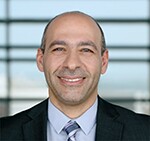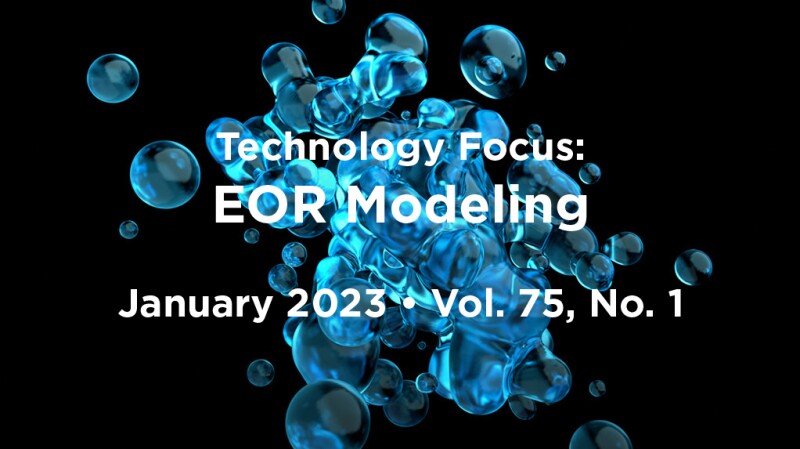The oil and gas industry is facing unprecedented responsibility and expectations to keep fueling the world’s economies and social developments with reliable, accessible, safe, and affordable energy sources while responding to the global urgency to safeguard natural resources and protect the environment. Most major oil and gas companies have announced decarbonization strategies for low-carbon or net-zero emissions associated with their business operations. Consequently, reducing the carbon intensity of oil production [kilograms of carbon dioxide (CO2) equivalent emitted per produced barrel of oil] will be pivotal to meeting the environmental mandate. On the other hand, approximately 70% of the world’s counties have set targets to reach net zero within the next 3–5 decades, including emissions from burned hydrocarbon, which is a major challenge. Within this exigent mission to transition the industry, a major question arises about the merit and the role of enhanced oil recovery (EOR).
With a share below 3% of the global oil production, field-scale EOR deployment and contribution have been modest despite substantial investments made in research and development and piloting in the last 4 decades. This underperformance of EOR has been attributed mostly to competitive alternatives (waterflooding), high cost, complex infrastructure and supply chains, fluctuating oil prices, and others. In the era of thirst for sustainability in our industry, there are reviving opportunities for selective EOR methods that can achieve efficient oil production with low carbon intensity. For instance, CO2 EOR is intuitively a win/win technology. This method may not be feasible everywhere for various reasons, however, including the availability and proximity of CO2 sources and the suitability of reservoir conditions. Chemical EOR methods, such as low-salinity, polymer-, and surfactant-based methods with low chemical usages have the potential to reduce water usage and enhance recovery factors, particularly from tight oil reservoirs. In contrast, EOR methods that are inherently associated with high carbon intensity, such as thermal EOR, will face stricter constraints to perform, including prohibitive costs for carbon offsetting. Advanced modeling and optimization, including guided machine learning and data analytics, will be crucial to maximizing recovery, quantifying uncertainties, and managing risk while preserving resources and reducing costs.
The selected papers in this feature include examples of innovative approaches for developing efficient EOR schemes and advanced modeling and optimization. In one inclusion, optimized water chemistry is engineered for various EOR schemes (e.g., polymer, surfactant, CO2) to improve efficiency while reducing chemical usage. The second inclusion demonstrates an integrated core-to-field work flow to design surfactant-based EOR for a tight formation at the laboratory scale and demonstrate its performance using field-scale simulations. An integrated optimization approach for a Permian CO2-EOR field is demonstrated in the third paper, where an advanced Bayesian framework is used to capture uncertainties.
Our industry has consistently demonstrated resilience, adaptivity, and creativity. In the era of industry transition to low-carbon operations, opportunities exist for selective EOR methods to revive and contribute.
This Month’s Technical Papers
Study Evaluates Surfactant EOR From Tight Carbonates
Smartwater-Based Synergistic Technologies Offer Potential in Enhanced Oil Recovery
Bayesian Framework Helps History Matching of Permian EOR Field With Data Uncertainty
Recommended Additional Reading
SPE 208121 Polymer Injection To Unlock Bypassed Oil in a Giant Carbonate Reservoir: Bridging the Gap Between Laboratory and Large-Scale Polymer Project by Clement Fabbri, ADNOC, et al.
SPE 208127 The World’s First Offshore Gravity-Assisted Simultaneous Water-Alternating-Gas EOR Full‑Field Implementation by Ahmad Khanifar, Petronas, et al.
SPE 207449 Numerical Optimization of Water-Alternating-Gas Injection in a Sandstone Field Using a Coupled Surface and Subsurface Model by Thaer I. Ismail, Khalifa University of Science and Technology, et al.
Hussein Hoteit, SPE, is a professor of earth science and engineering and chair of the Energy Resources and Petroleum Engineering program at King Abdullah University of Science and Technology (KAUST) in Saudi Arabia. Before joining KAUST in 2016, he worked for approximately 15 years for the oil and gas industry, including at Chevron and ConocoPhillips, where he conducted projects related to chemical enhanced oil recovery (EOR), CO2-EOR, steamflooding, and other aspects of EOR. Hoteit’s current research includes chemical EOR, waterflooding optimization, geological CO2 sequestration, underground hydrogen storage, CO2 mineralization in basalt, data-driven modeling, and reservoir simulation development. He has published more than 150 technical papers and has earned several SPE awards. Hoteit was an SPE Distinguished Lecturer in 2009 and earned the A Peer Apart award in 2017. He served as an associate editor for SPE Journal for more than 10 years. Hoteit holds a BS degree in mathematics from the University of Lebanon and MS and PhD degrees in computer science and applied mathematics from the University of Rennes, France.

